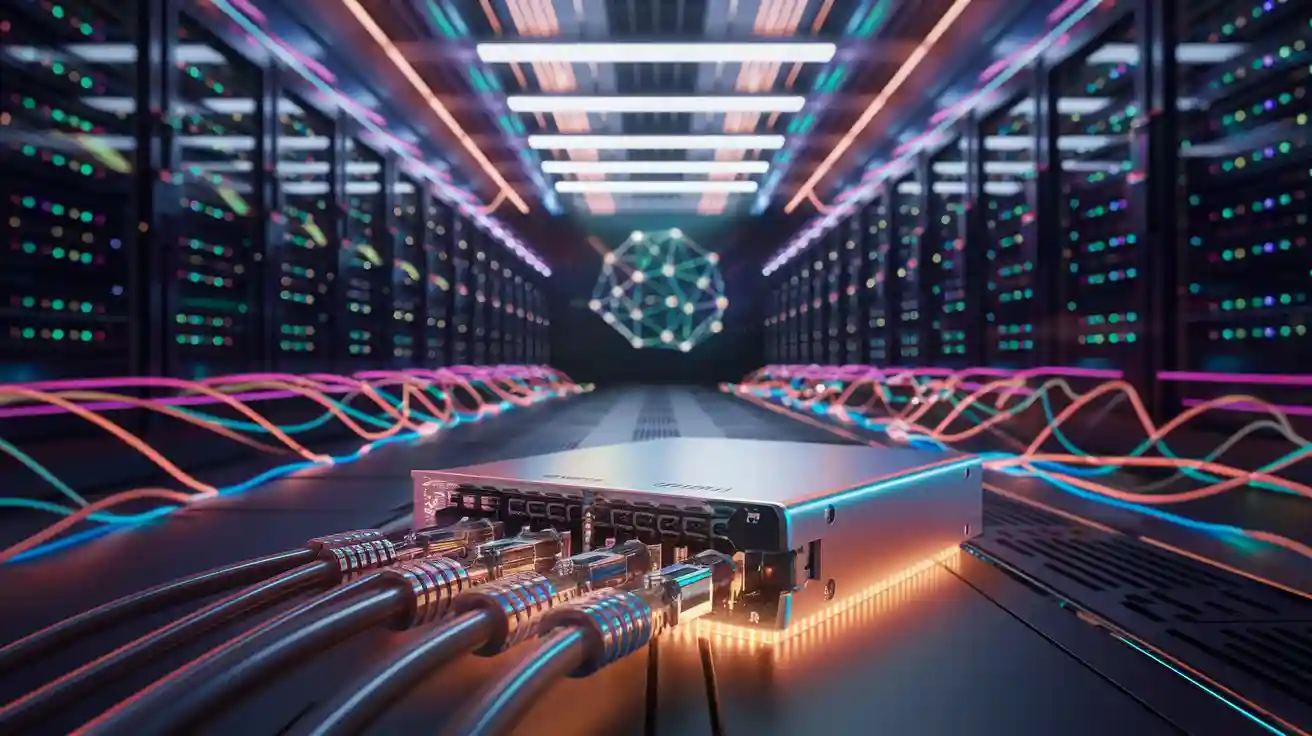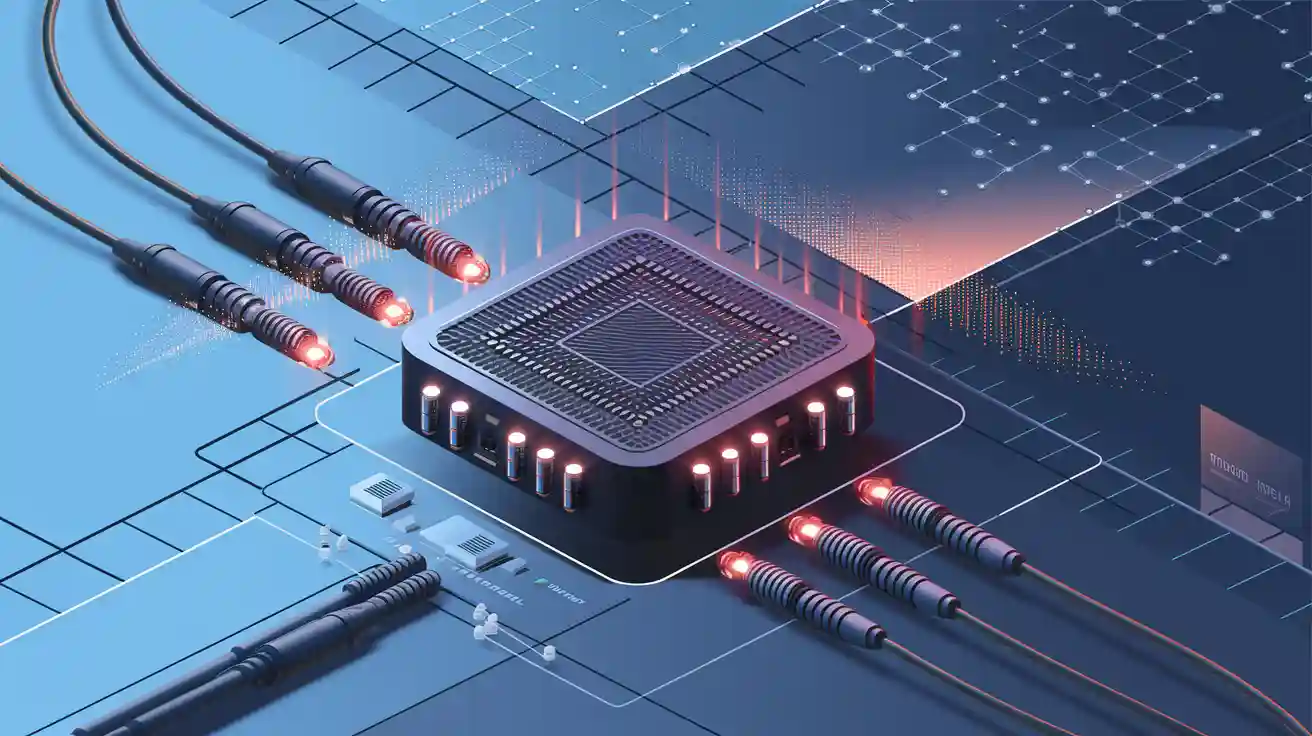
100G SFP-DD transceivers are changing high-density networks with new features. They allow fast communication over long distances, which is important for data centers needing quick speeds and more data. These devices use Single Lambda technology to make networks simpler. This helps us use bandwidth better and doubles data capacity without needing more space. The world’s demand shows their importance. The data center transceiver market may grow from $4.5 billion in 2023 to $12.3 billion by 2032. This growth is because of the move from 40G to 100G transceivers. This shows how important they are for today’s systems.
Understanding 100G SFP-DD Transceivers
Technical Specifications
100G SFP-DD transceivers work fast with advanced features. They send data at 100 Gbps using two lanes. Each lane moves data at 50 Gbps with PAM4 modulation. This setup keeps data moving quickly and efficiently. They follow IEEE 802.3cd 100GBASE rules, so they fit with current Ethernet systems. This makes upgrading networks simple and stress-free.
These transceivers also save energy. Each one uses only 3.5 watts of power. This helps keep 100G networks energy-efficient. Their small size and high bandwidth meet the need for faster communication services.
Feature | Description |
|---|---|
Data Rate | Sends 100 Gbps using two lanes (50 Gbps per lane). |
Compatibility | Works with older SFP setups. |
Bandwidth | Gives four times more bandwidth than SFP28 (25G). |
Form Factor | Same small size as older SFP modules. |
Compact Form Factor and Dual-Density Interface
The small size of 100G SFP-DD transceivers is a big advantage. They are as small as older SFP modules. This makes them great for networks needing many connections in tight spaces. The dual-density interface doubles the number of ports. You can connect more devices without needing extra room. This is helpful for data centers where space is limited.
These transceivers are hot-swappable. You can replace or upgrade them without turning off the system. This reduces downtime and keeps the network running smoothly.
Applications of 100G SFP-DD Transceivers

Data Center Interconnection
Data centers store and manage huge amounts of information. Connecting them well is important for smooth operations. 100G SFP-DD transceivers send data at 100Gbps, making communication faster. This improves how networks work overall.
These transceivers can send data up to 10 kilometers. This makes them great for linking data centers far apart. Their small size lets switches fit more ports, saving space. The dual-density design doubles bandwidth, helping handle more data easily.
Feature | Description |
|---|---|
High-speed data transmission | Sends data at 100Gbps, boosting network speed and efficiency. |
Long-distance coverage | Works over 10 kilometers, connecting data centers in different areas. |
Compact form factor | Fits more ports in switches, saving physical space. |
Dual-density interface | Doubles bandwidth in the same space compared to older designs. |
Backward compatibility | Works with older SFP and SFP+ modules, protecting investments. |
Easy deployment | Hot-swappable design allows quick changes without shutting down systems. |
These features make 100G SFP-DD transceivers a smart choice for connecting data centers.
Core Network Upgrades
Core networks handle lots of data traffic. Upgrading them is important to keep up with growing needs. 100G SFP-DD transceivers work with older SFP and SFP+ modules. This means you can use them without replacing all your equipment.
They are fast and have a dual-density design. This lets networks handle more connections and data. These transceivers improve network capacity and efficiency while keeping costs low.
5G Network Infrastructure
5G networks need faster and stronger connections. 100G SFP-DD transceivers help meet these needs. They send data quickly, which is important for things like live video and smart devices.
Their small size fits well in 5G base stations where space is tight. They also connect base stations over long distances, keeping the network steady. These transceivers help build reliable 5G systems ready for future demands.
Disaster Recovery and Business Continuity
Keeping communication running during disasters is very important. 100G SFP-DD Transceivers help your network stay active in emergencies. They send data quickly, making it easier to back up and restore files. This speed reduces downtime and prevents losing important data.
These transceivers can send data over long distances. For instance, you can connect two data centers up to 40 kilometers apart using single-mode fiber. This keeps your information safe, even if one location has a problem.
Tip: Add extra network paths with 100G SFP-DD Transceivers. This way, your system can switch traffic automatically during outages, keeping things running smoothly.
Their small size lets you save space in disaster recovery setups. You can add more connections without needing extra equipment. This saves money and makes your network stronger.
High-Performance Computing and Campus Networks
High-performance computing (HPC) and campus networks need strong, fast connections. 100G SFP-DD Transceivers provide high-speed data transfer and more connection options. In HPC, they handle tasks like AI training, simulations, and big data work. Their advanced design ensures they work well, even with heavy use.
For campus networks, these transceivers make it easy to link different buildings. They can send data far, which is great for large campuses. Whether connecting offices, labs, or dorms, they ensure smooth communication.
They also work with older SFP modules, so you can upgrade slowly. This helps you save money while getting ready for future needs.
Note: The hot-swappable feature of 100G SFP-DD Transceivers makes maintenance simple. You can replace or upgrade them without stopping the network, keeping service steady for everyone.
Deployment Considerations for 100G SFP-DD Transceivers
Compatibility with Existing Systems
When using 100G SFP-DD Transceivers, check if they fit your network. These transceivers follow IEEE 802.3 and MSA rules. This ensures they work with many devices. They are easy to add to current Ethernet systems.
They also work with older SFP setups. You can use special cables or adapters to connect them. But, performance might be a bit lower in these cases. The hot-swappable feature is helpful too. You can replace or upgrade them without turning off the system. This keeps everything running smoothly.
Feature | Details |
|---|---|
Standards Compliance | Meets IEEE 802.3 and MSA rules for wide compatibility. |
Backward Compatibility | Works with older SFP systems using special cables or adapters. |
Hot-Swappable Design | Allows changes without shutting down, keeping systems running. |
Transmission Distance Requirements
Knowing how far data can travel is important. The distance depends on speed and fiber type. At 100G speeds, the maximum range is 150 meters. This works well for short distances like in data centers.
For longer distances, single-mode fiber can reach up to 40 kilometers. This makes these transceivers useful for both short and long connections. You can pick the right setup based on your network's needs.
Cost-Effectiveness and ROI
Buying 100G SFP-DD Transceivers can save money over time. Their small size and dual-density design double the number of ports. This means you don’t need extra hardware, saving costs.
They also work with older systems, so you don’t need to replace everything at once. You can upgrade slowly, which lowers upfront costs and increases savings.
These transceivers use only 3.5 watts of power. This energy-efficient design cuts electricity costs in places like data centers. With these features, you can build a fast network without spending too much.
Fiber Infrastructure Needs
Your network's fiber setup is key for 100G SFP-DD transceivers. These transceivers need good fiber cables to work well. Check your current fiber system to see if it can handle fast data speeds.
Single-mode fiber (SMF) is best for long distances, up to 40 kilometers. It has low signal loss and is very reliable. This makes it great for main networks and linking data centers. Multimode fiber (MMF) is better for short distances, like inside data centers. It works up to 100 meters with OM4 fiber and is a cheaper option for tight spaces.
Tip: Make sure your fiber type matches the transceiver's needs. This avoids problems and keeps everything running smoothly.
Keeping cables neat is also important. Messy cables can cause signal issues and make fixing problems harder. Use labeled panels and organized cabling to keep things tidy. This makes repairs and upgrades easier.
Using good connectors and adapters improves performance too. Bad parts can weaken signals and slow your network. By focusing on strong fiber systems, you get the most out of 100G SFP-DD transceivers.
Planning for Future Bandwidth Expansion
Planning helps your network grow and stay efficient. Use strategies that mix current tools with future tech. For example, adding high-capacity switches prepares your system for more traffic.
Think about using optical tech like 400G and 800G transceivers. These give more bandwidth for things like AI and 5G. Software-defined networking (SDN) is also helpful. It lets you control network resources better and adds flexibility.
Steps to prepare your network for the future:
Use systems that combine old and new tech.
Buy high-capacity switches and optical tools.
Add SDN for better resource management.
Upgrade cooling systems for energy savings.
Energy use grows as networks expand. Switching to energy-saving cooling and power systems helps keep costs down. Planning now builds a network ready for future needs while staying affordable.
Note: Check your network's performance often. This helps find weak spots and keeps your system ready for new technology.
100G SFP-DD transceivers are key for today’s busy networks. They offer fast speeds, great efficiency, and easy growth. These features make them perfect for data centers, 5G systems, and disaster recovery. Their small size and smart design save space and improve performance.
Tip: Check if your network setup and fiber cables work well with these transceivers to get the most out of them.
Plan for more data needs. This helps your network handle current tasks and get ready for future challenges.




